
Harvest 2011 will go down in the history books as one wild ride.
Spring began with endless rain and the vintage looked like it was heading for disaster. But the rains turned out to be a blessing, providing a reservoir as the summer turned extremely dry and hot.
Everything looked good as September approached, in fact some were whispering about a repeat of the wonderful 2010 vintage, a rarity in Niagara to experience back-to-back exceptional seasons.
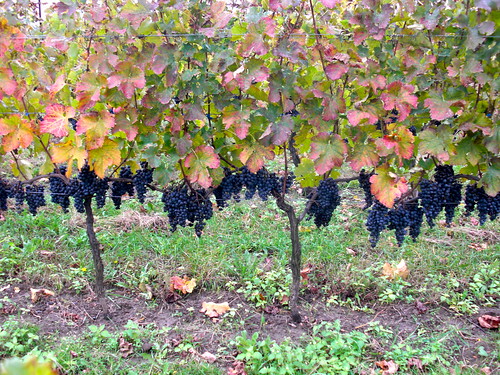
Wineries in Niagara were caught in the unenviable position of picking when they could, and not necessarily when they wanted to, between periods of heavy rain (some were forced to pick in the rain and try to dry the grapes back at the winery before crushing).
In a lot of ways, those who used mechanical harvesters were luckier than wineries that only pick by hand. Machine harvesting enabled wineries to get out there quickly during the brief dry periods and pick a lot of grapes fast. Hand picking was much more labour intensive and sporadic. I can’t count the number of times I was at a winery this fall and saw teams of pickers stranded beside vineyards just waiting for a break in the weather. Often, that break never came.
There were also sporadic reports of unusually high incidents of powdery mildew in pockets of Niagara. But after talking to winemakers it was only a matter of certain blocks in the vineyard that were affected and not a problem on a large scale.
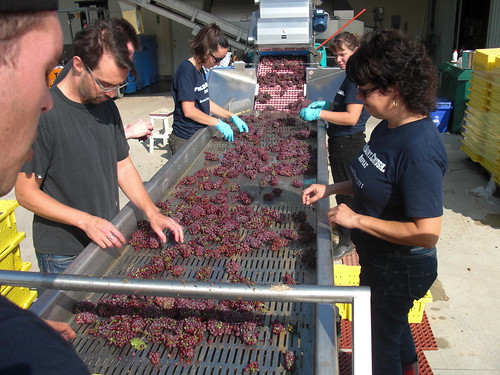
I have heard good things about some varietals: Pinot Noir, aromatic whites (Gewurztraminer being a star), Baco Noir and Cabernet Franc, to name a few. But with grapes that needed extended hang time in the vineyard it was like playing Russian roulette with the weather as the fall progressed. That included Merlot and Cabernet Sauvignon (though some wineries reported that both those varietals showed lovely flavours). Chardonnay, other than the early picked berries for sparkling wines, was troublesome for most wineries across the board.
As with any vintage, it is unfair to paint the whole lot with the same brush. It is partially in Mother Nature’s hands but that’s only part of it. How vineyard managers and winemakers make their decisions on when to harvest the grapes can turn what looks bleak into something special.
Those who practiced sound vineyard management, smart decisions on when to pick and careful sorting of the fruit once it did arrive at the crush pad (or in the field) will make some great wines. It really is a producer’s vintage, the best will make some good wines, but it won’t be a vintage that’s of even quality across the board, unfortunately.
At the mid-way point of the vintage I asked some winemakers and principals at wineries for a mid-term report on the season. You can see what they said here. I also asked them for a final wrapup, in their words, of the season from their point of view. Here’s what they had to say (some reports were filed a week ago).
•••
Craig McDonald
Senior Winemaker
Vintage is dragging on a little as we play “cellar chess” and try to manoeuvre tanks and ferments to squeeze in the last 800 tonnes of Cabernet Sauvignon. Everything else is in and despite the relatively damp October, we are seeing higher than average sugars and very low acids.

Merlot and Cabernet Franc are mostly pressed off and show a ripe profile with again really low acidity. This should make for approachable wines right out of the gate and gives us a good template with which to build on texturally. Cab Franc from our Clark Farm recorded the highest sugar of the vintage thus far at 26.1 brix.
CS’s are streaming in and although a little lower in sugar than the others has really nice ripe flavours and less green characters then you might have expected.
It has been a tough one there’s no doubt. Gambling with the weather and harvesting inconsistently in waves of madness has been the norm. What’s becoming obvious is that with the great 2010 growing season and another one right after the vines have been able to literally weather the storms of an unpredictable fall and produce surprisingly good grapes — tough little buggers! This won’t be a sleeper vintage, it is just going to be a good one plain and simple!
•••
Michele Bosc
Director of Marketing
We are picking the last stuff today — Late Harvest Riesling. Here are our thoughts.

1. Bunches were “cleaned” regularly. This is very labour intensive work with staff checking individual berries on every bunch, multiple times over the weeks. Those berries showing signs of rot were picked off immediately leaving only healthy, clean grapes to hang
2. When we picked we did so before dawn. We believe during this cooler picking window the grapes are more likely to be in better shape than when the warmth of the day activates any mould spores.
Despite the challenges of harvest 2011, we were still able to pull reasonable yields even with terrific Brix. Our Bordeaux red varieties were coming in anywhere from 23.5° to 25° Brix. A very pleasant surprise!
•••
Paul Speck
President
We came into spring in good shape from the winter. A cool spring gave us a late start. We went from winter to summer. The vines were exceptionally fruitful at flowering due to the fantastic growing season of 2010 and a mild winter. July and August were remarkably warm and dry. We more then recovered from the late spring start, which is unusual.

Baco Noir (the King of all grapes) is exceptional this year as it is the first grape to come in and they benefited immensely from this season as they were picked before the fall rains.
Rain in September presented some challenges so we chose to pick ahead of the rain whenever possible choosing to get fresh fruit and preserve the freshness in the wines.
This was Henry of Pelham’s 23rd vintage (Yikes, I don’t feel that old!). Having the benefit of working with our estate vineyards and with a team of Bros, winemakers and staff who have experienced a wide variety of harvests, together we made decisions that only experience can make.
These vintages generally separated the wineries in terms of quality, consistency and long-term focus. I almost cherish them!
The wines are very typical of Niagara. Whites are aromatic, fresh with good acidity. Reds are showing bright fruit as well and are not overly tannic due to the enological ripeness of the fruit. We had good Brix (sugar) levels, brown seeds (a measure of ripeness) and great flavours in the grapes. Some potential concentration was lost to rain. I would put this vintage ahead of 08 in general with whites on par with 09 and better for most reds.
Thanks to the stamina of our winemaking and grape growing team who dealt with a very compact harvest, long days and nights and times where we had whites and reds coming in at the same time for doing such an amazing job. We also brought in extra fruit as the overall harvest was above average in size so it will be a while before the Speck Bros can take a bath as they are filled, too.
•••
Jeff Aubry
President
It has been a challenging year, right from the spring (cold, wet, late bud break), through the summer (excessive heat), and into the fall (3rd generation grape berry moth, early cold, and way too much rain).
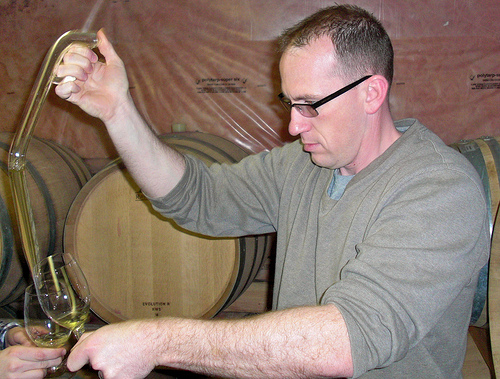
We did a tremendous amount of field sorting, and sometimes had to make tough decisions (i.e. no Black Paw Chardonnay — all of it went to sparkling, as it was a pick-it-or-lose-it scenario). Yields were higher than expected, mostly due to uptake of moisture. What we did bring in was good quality, but I would think that the 08 and 09 vintages produced better whites.
Gewurztraminer was the exception this year. Fabulous fruit, great ripeness, disease-free. Easily the best of the whites for us. Most likely, it will be less powerful than the 2010 Gewurz wine, but I expect it to be very elegant.
The Pinot Noir had some of the same issues as the whites, but to a much more limited extent. Brix levels on the Pinots were not especially high; however, the fruit that came in was particularly aromatic and flavourful. Our 828 block was harvested very late (after Merlot and Syrah). That 828 clone should be renamed the ironman clone. Delicious stuff. Again, higher than expected yields due to moisture. I am holding out hope that the 11s will be as good as the 09s. I definitely believe they will be better than the 08s.
Merlot and Syrah were quite lovely this year. Great colour, excellent flavors all around. Syrah suffered a bit of botrytis (it is somewhat prone to that), so yields were lower than expected.
Cab Sauv may yet prove to be the star of the vintage. Amazing fruit and delicious flavours. Normally, Cab Sauv is a terrible eating grape, but not this year. Great stuff. Yields were high again, owing to moisture uptake. I am eagerly awaiting these wines – this could be the first year of a Red and Black Paw Cab Sauv.
All in all, I would like to aim a few choice words to the person at Environment Canada that called for a warm dry fall. But, that being said, I am hopeful that vintage will be quite good. Certainly Gewurz, Pinot Noir, and Cab Sauv have tremendous promise.
•••
Sebastien Jacquey
Winemaker
This harvest was once again quite challenging in Niagara, with a late start to the growing season and a hot and humid July. Between mid August and mid September, the weather was quite ideal for Pinot Noir and Chardonnay; sunny days with cool nights and dry!!!! That really allowed our Pinot Noir to get close to an ideal phenolic ripeness. Unfortunately, and I would tend to say “as usual in Niagara,” the rain started around Sept. 17 and barely stopped until the beginning of October, creating challenges as to when and how we picked the grapes.
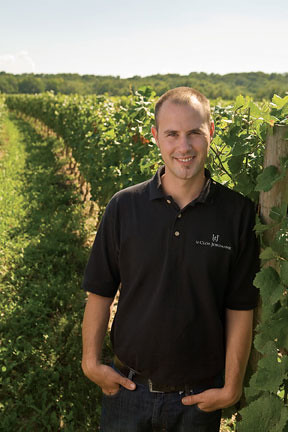
Despite the presence of bunch rot and botrytis, we were able to severely sort the grapes, giving us low VA in the tank must. The colour and structure in the Pinot Noir came out really well, with nice flavours of ripe, black fruit.
PH was naturally low helping to preserve the cleanliness and the colour of the wine. We are ending the macerating now with high colour, good ripe tannins that are still quite rustic and only 1.5 g/l of malic acid to ferment.
So my feeling is that we will be able to preserve the concentration, fruit and tension in Pinot this year quite easily.
The Chardonnay grapes were all really clean and ripe with beautiful gold skin and brown seed. Fermentations were slow to start but as soon as they were in barrel they occurred naturally, remaining slow and with low temperatures, preserving the freshness of the varietal aromas and the fermentation aromas.
We are now close to finishing fermentation for the young chards; flavours are quite juicy and citrusy with not much malic to do as well. And so, as with the Pinot, we should be able, even after malolactic fermentation, to preserve freshness and tension in this wine.
Overall, the vintage for us looks better than what we were initially thinking for both Pinot and Chard.
I would describe it as a cool vintage, even considering the GDD we’ve reached at the end of October are close to what we had last year for the full year. I’m looking forward to the malo-lactic fermentation understand more about the balance we can expect in these wines.
•••
William Roman
Operations Manager
Rosewood Estate Winery and Meadery
As many of you have probably already heard this vintage is one to remember — a true Niagara roller-coaster. The 2011 season saw many ups and downs starting with a cool, delayed wet spring, this not only delayed bud burst for the vines, it also killed off many of southern Ontario’s bees (average Ontario mortality rate coming out of 2010-2011 winter: 60%).
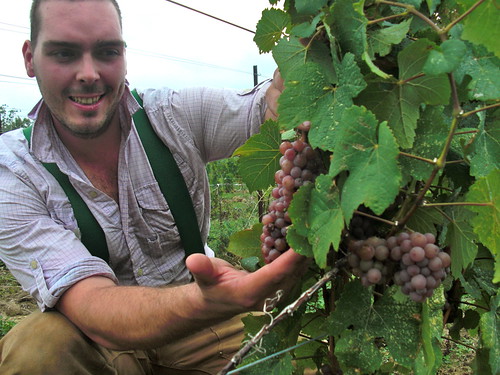
After the rain returned we had what could be considered average rainfall for the tail end of the summer, leading into harvest, things were still looking good.
At this point the vines were doing well, the fruit was maturing nicely through veraison, we needed only a few more weeks of sun to get us through harvest. Then harvest began — and with it, many, many days of rain in September and October.
All the rain made the harvest period a difficult one, as you needed to time your grape picks according to the weatherman’s forecast (and pray he was correct), while watching your sugar’s and acids to try and hit your targets.
At the end of the day, and after the struggles, some great flavours, colour, concentration and quality has been created in this difficult vintage. I am very excited about the wines that are now being shaped in the cellars and am excited to see what happens in the months to come! I think this is a great vintage for people to see how hardworking and dedicated our growers and producers are to producing quality wines, even in “difficult vintages”.






Comment here